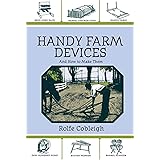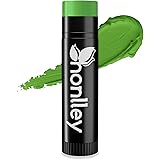Are you staring at a closet full of clothes you rarely wear, wondering if there’s a more creative fate for them than the donation bin? As Andrea beautifully demonstrates in the video above, the answer is a resounding yes! The world of upcycling offers an incredible avenue for transforming tired garments into fresh, fashion-forward pieces without ever threading a needle. This expert guide delves deeper into the no-sew DIY techniques that redefine wardrobe reinvention, allowing you to harness your inner designer and craft stunning, sustainable styles.
Transforming Your Wardrobe: Expert No-Sew DIY Ideas for Upcycling Old Clothes
The concept of upcycling old clothes transcends mere DIY; it represents a conscious choice towards sustainable fashion and personal expression. Instead of contributing to textile waste, which accounts for a significant portion of landfill content annually, you can breathe new life into forgotten fabrics. This approach not only slashes your fashion budget but also infuses your wardrobe with unique items that reflect your individual style. Andrea’s ingenuity in converting seemingly unwearable items into desirable garments illustrates the immense potential inherent in every piece of fabric you already own.
The Art of No-Sew Transformation: Reimagining Your Garments
Many of us hold onto clothing we no longer wear, often due to sentimental value, the hope of it coming back into style, or simply procrastination. This phenomenon, affectionately termed “wardrobe hoarding” by some, actually presents a prime opportunity for creative intervention. Rather than letting these garments languish, consider them raw material for a design evolution. The foundational principle of no-sew upcycling is to alter the garment’s structure, silhouette, or function using innovative adhesion methods and strategic cuts, thus achieving a completely new aesthetic without traditional garment construction techniques.
From Maxi to Mini: Creative Garment Reconstruction
One of the most satisfying transformations involves deconstructing a larger garment into multiple, distinct pieces or repurposing it entirely. This method maximizes the utility of existing fabric and encourages a holistic view of your wardrobe’s potential. By meticulously planning your cuts and understanding the fabric’s drape and stretch, you can achieve professional-looking results that belie the simplicity of the no-sew process. The precision in measuring and the strategic application of fabric adhesives become paramount to successful garment reconstruction.
The Versatile Bandeau Top: Skirt Repurposing Explained
Andrea’s transformation of a disliked maxi skirt into a chic bandeau top exemplifies intelligent textile manipulation. The process begins by surgically removing the existing waistband, which often contains elastic or structural components unsuitable for the new design. Subsequently, she accurately halves the remaining skirt fabric, ensuring perfect symmetry. The innovation lies in the precise alignment of the two cut edges and their secure bonding with a high-quality fabric glue, a process that reliably cures within approximately fifteen minutes. This creates a long, continuous fabric piece perfectly suited for wrapping and tying, offering both a fashionable bow accent or a minimalist knot to suit diverse styling preferences.
Crafting the Chic Tie-Strap Tube Top
Breathing new life into an over-worn favorite shirt by converting it into a stylish tie-strap tube top showcases a keen eye for modern design trends. The initial step demands careful measurement of the desired length while wearing the shirt, guaranteeing a flattering cut. Utilizing the upper half of the original shirt, four precisely cut straps, each approximately one inch in width, are fashioned. The critical technique involves flipping the nascent tube top inside out to meticulously attach these straps with fabric glue, ensuring a clean, concealed finish when worn. This particular fabric adhesive, lauded for its impressive strength and washability, forms a durable bond in about fifteen minutes, making it a reliable choice for active wear. For enhanced textile longevity and to mitigate potential fraying, applying a thin layer of clear nail polish along the raw cut edges provides an effective sealant, a clever hack that prolongs the garment’s lifespan and maintains its polished appearance.
Instant Style Upgrades: Quick No-Sew Fixes
Some garments require only minimal intervention to unlock their full fashion potential. These quick fixes are not only time-efficient, often taking mere minutes, but also incredibly impactful, dramatically altering the garment’s character. Such projects are perfect for when you need a rapid wardrobe refresh or wish to experiment with new styles without significant commitment. The immediate gratification of seeing a previously undesirable item become a favorite is a powerful motivator in the realm of no-sew DIY.
The Effortless Off-the-Shoulder Crop Top
Transforming a long-detested top into a captivating off-the-shoulder crop exemplifies the power of strategic cutting. For garments featuring stripes, these inherent patterns serve as invaluable guides for achieving perfectly straight cuts, eliminating the need for complex marking. The process involves cleanly severing the neckline straight across and then meticulously shaping the sleeves to create the elegant off-the-shoulder drape. Further shortening the sleeves enhances the modern aesthetic, while a final, precise crop to the desired length completes the silhouette. This entire process can take as little as ten minutes, proving that significant style upgrades do not demand extensive time commitments. A swift application of clear nail polish along all newly cut edges provides an essential barrier against fraying, ensuring the garment’s pristine finish endures through wear and washing.
DIY Fringe Earrings and Tassel Adornments
Beyond clothing, no-sew techniques extend to accessory creation, offering a personalized touch to any ensemble. Crafting fringe earrings, for instance, is an exceptionally rapid project, often achievable in under two minutes. The method involves selecting an existing hoop or suitable base, then cutting a length of string (like the versatile white string Andrea chose) in half. Threading this string through the hoop and then securely fastening its top half—either with another length of string or a small metal ring—forms the core structure. Finally, determining the desired tassel length and making a single, precise cut completes these stylish adornments. This technique is incredibly adaptable, easily modified to produce charming tassel necklaces, keychains, or even decorative accents for bags, showcasing the expansive possibilities of simple string manipulation in fashion.
Advanced No-Sew Techniques: Mastering Fabric Adhesion
Achieving a professional finish in no-sew projects often hinges on the judicious application of advanced fabric adhesion techniques. These methods go beyond simple gluing, leveraging thermal bonding and precise folding to create clean, durable seams that rival traditionally sewn garments. Understanding the properties of different adhesive agents and their optimal use allows for a broader range of complex garment constructions, expanding the scope of what’s possible without a sewing machine. This level of detail in adhesion ensures both aesthetic appeal and structural integrity for your upcycled creations.
The Cohesive Two-Piece Set: Iron-On Fabric Tape Excellence
Creating a matching two-piece set from a single maxi skirt represents a pinnacle of no-sew garment reconstruction, primarily achieved through the strategic deployment of iron-on fabric tape. This project commences with marking the precise cut point on the skirt, effectively dividing it into a new skirt and the raw material for a tube top. Utilizing an existing, well-fitting tube top as a template, the remaining fabric is cut to size, leaving crucial extra allowance for folding and creating immaculate finished edges. A critical step involves carefully separating the original skirt’s back seam, allowing the fabric to be re-sized and shaped to fit the body perfectly. The iron-on fabric tape then becomes the hero, systematically bonding folded edges of both the tube top and skirt portions. This thermal adhesion creates crisp, “sewn” appearances, eliminating raw edges and ensuring a polished aesthetic suitable for any vacation or stylish outing.
Essential Tools for the No-Sew Enthusiast
Embarking on a no-sew DIY journey requires a thoughtfully curated toolkit to ensure both ease of execution and professional results. At the core of this collection are high-quality, sharp fabric scissors, essential for making clean, precise cuts that form the foundation of any garment alteration. A robust, washable fabric glue is indispensable for creating strong, lasting bonds, particularly for structural elements like straps or secure overlaps. Clear nail polish serves as an ingenious sealant, effectively preventing fraying on raw fabric edges and extending the lifespan of your creations. Iron-on fabric tape, activated by heat, is crucial for achieving impeccably clean hems and seams, mimicking the finish of traditional sewing. Finally, reliable measuring tools such as a flexible tape measure and a sturdy ruler are paramount for accuracy, ensuring your cuts and dimensions align perfectly with your design vision.
Elevating Your Upcycling Game
Beyond simply executing these projects, consider the broader design principles that elevate your no-sew creations from mere alterations to sophisticated fashion statements. Begin by thoughtfully assessing the original fabric’s characteristics: its drape, stretch, pattern, and texture all influence how it will perform in a new silhouette. Experiment with garment deconstruction by envisioning how different sections of a garment could be reassembled or repurposed, similar to Andrea’s transformation of a maxi skirt into multiple pieces. Focus on maintaining aesthetic coherence and structural integrity, even without a sewing machine. This involves precise measuring, neat cuts, and the strategic application of your chosen adhesives, ultimately ensuring your upcycled items are not only stylish but also durable and truly wearable.
The ingenuity demonstrated in these no-sew DIY projects empowers you to look at your existing wardrobe with a fresh, creative perspective. These techniques offer practical solutions for refreshing your style, reducing textile waste, and embracing a more sustainable approach to fashion. By mastering the application of fabric glue, clear nail polish, and iron-on fabric tape, you unlock a realm of possibilities for transforming old clothes into fashionable new pieces. As you’ve seen in Andrea’s excellent video, the potential for no-sew DIY upcycling is immense, inviting you to experiment and truly make your wardrobe your own.







